By: Benjamin Jones, University of Alaska Fairbanks
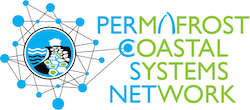
Researchers from the University of Alaska Fairbanks led the organization of an International Arctic Coastal Network (IACN) retreat in Mystic, Connecticut from 16—21 October 2022, with funding from the National Science Foundation (NSF) Accelerating Research through International Network-to-Network Collaborations (AccelNet) program. The AccelNet program supports strategic linkages among US research networks and complementary networks abroad that leverage research and educational resources to tackle grand research challenges that require significant coordinated international efforts. Funding from the AccelNet program for the Permafrost Coastal Systems Network (PerCS-Net) provided travel support for bringing together the international Arctic coastal research community. Additional support was provided by NSF's Arctic Systems Science (ARCSS) program, a European Space Agency funded project, Earth Observation for Permafrost Dominated Arctic Coasts (EO4PAC), as well as Nunataryuk, a European Union funded project.
The IACN retreat brought together 42 researchers from 22 different research institutions located in eight different countries to focus on the unprecedented climate and land use change issues impacting Arctic coasts and the communities located there. Researchers from the United States, Austria, Canada, Portugal, Germany, United Kingdom, Poland, and Russia brought a wide diversity of perspectives on the issues being faced along Arctic coasts. More than half of the attendees of the IACN retreat were either graduate students or early career researchers.
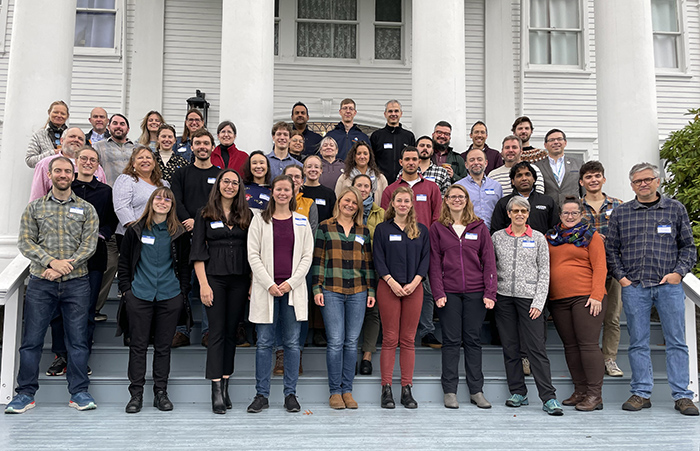
The attendees included: Matthew Balazs, Richard Buzard, Jessica Garron, Roberta Glenn, Noelle Helder, Anne Jensen, Benjamin Jones, Chris Maio, Jana Peirce, Joy Snodgrass, Melissa Ward Jones, and Victoria Wolf, University of Alaska Fairbanks (USA); Anna Irrgang, Ingmar Nitze, Justus Gimsa, and Maren Jenrich, Alfred Wegener Institute (Germany); Annett Bartsch and Helena Bergstedt, B.Geos (Austria); Roger Creel, Columbia University (USA); Dustin Whalen, Geological Survey of Canada (Canada); Ravi Sankar, Longwood University (USA); Mette Bendixen, McGill University (Canada); Nataliya Belova (virtual attendee), Moscow State University (Russia); Michael Lim, Northumbria University (UK); Emily Eidam, Oregon State University (USA); Anastasia Piliouras, Penn State University (USA); Marnie Bryant, Scripps Institution of Oceanography (USA); Gonçalo Vieira, Bernardo Costa, and Rodrigue Tanguy, University of Lisbon (Portugal); David Didier, Université du Québec à Rimouski (Canada); Chandi Witharana and Elias Manos, University of Connecticut (USA); David Nielsen, Universität Hamburg (Germany); Andrey Petrov, University of Northern Iowa (USA); Emily Bristol and Cansu Demir, University of Texas Austin (USA); Craig Tweedie and Sasha Peterson, University of Texas El Paso (USA); Matt Strzelecki, University of Wroclaw (Poland); Li Erikson and Ann Gibbs, U.S. Geological Survey (USA); and Julia Guimond, Woods Hole Oceanographic Institution (USA).
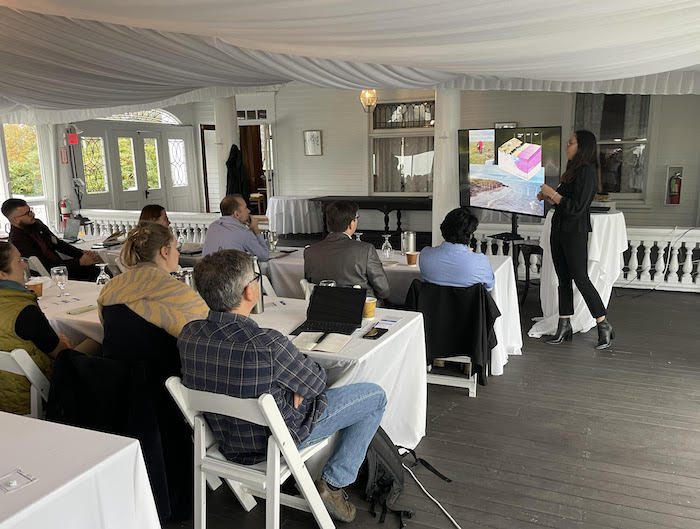
The IACN retreat included PechaKucha-style interactive self-introductions from each attendee; a panel focused on insights and updates in the aftermath of the recent Merbok storm in western Alaska; overviews from pan-Arctic coastal networks and research projects; and a series of breakout group discussions focusing on local and Indigenous observations, field studies and instrumentation, remote sensing and modeling, and coastal hazard assessments. The international gathering wrapped up with a discussion of ways to better share our observations with Arctic coastal communities and aspects of coastal permafrost changes in the context of the entire permafrost region.
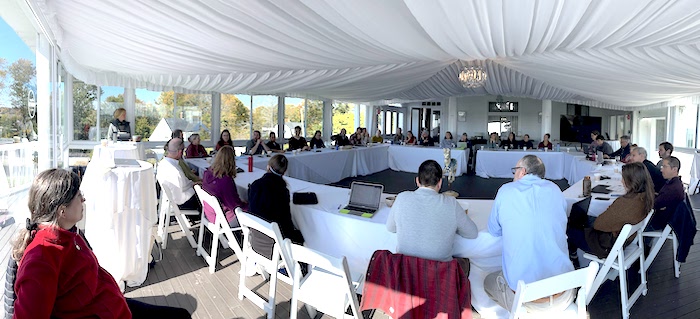
The pace of environmental change in the Arctic is increasing because of sea-ice loss and warming permafrost, resulting in a rapidly evolving coastal system experiencing a complex series of responses. Future Arctic coastal system dynamics will challenge conventional wisdom impacting human decision-making and adaptation planning, impacts to cultural heritage resources and communities, and likely resulting in unforeseen social and environmental challenges. The effort required to realize and address the scale and complexity of future challenges is far greater than any single institution, network, or typical funding allocation is capable of fully accomplishing. The IACN retreat promoted synergy across networks to foster the next generation of students, postdoctoral scholars, and early career researchers faced with the known and unknown challenges of future Arctic coastal systems.
Further news and detailed information about this International Network of Networks is available via the Permafrost Coastal Systems Network website.
About the Author
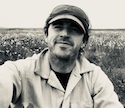 Benjamin M. Jones is a Research Professor in the Institute of Northern Engineering at the University of Alaska Fairbanks. His research focuses on Arctic and sub-Arctic systems and combines the use of GIS and remote sensing techniques with field observations and laboratory analyses to better understand the causes and consequences of landscape change, processes, and feedbacks in northern, high-latitude environments across a multitude of spatial and temporal scales.
Benjamin M. Jones is a Research Professor in the Institute of Northern Engineering at the University of Alaska Fairbanks. His research focuses on Arctic and sub-Arctic systems and combines the use of GIS and remote sensing techniques with field observations and laboratory analyses to better understand the causes and consequences of landscape change, processes, and feedbacks in northern, high-latitude environments across a multitude of spatial and temporal scales.
